US PPI rose 0.1%, 1.7% yoy in June, versus expectation of 0.1% mom, 1.6% yoy. PPI core rose 0.3% mom, 2.3% yoy, versus expectation of 0.2% mom, 2.1% yoy.
RBA Lowe: Further increase in rates required over the month ahead
RBA Governor Philip Lowe said in a speech that the robust post-COVID recovery is “now behind us” given that inflation is high and labor market is very tight. RBA thus have withdrawn some emergency insurance and raised cash rate by 125bps over the past three meetings to 1.35%.
RBA “expects that further increase will be required over the months ahead”, to “”help establish a more sustainable balance between demand and supply in the Australian economy.
SNB keeps policy rate at -0.75%, upgrades inflation forecasts
SNB keeps policy rate and interest on sight deposits at -0.75% as widely expected. The central bank said “it remains willing to intervene in the foreign exchange market as necessary, while taking the overall currency situation into consideration.”
New conditional inflation forecasts for 2021 and 2022 were revised higher. This is “‘primarily due to the rise in oil prices and the weaker Swiss franc”. But, “looking beyond the two-year horizon, the inflation forecast is virtually unchanged compared with December”. The forecasts now stands at 0.2% for 2021, 0.4% for 2022 and 0.5% for 2023.
SNB expects the GDP growth of 2.5-3.0% for 2021. Activity is likely to return to its pre-crisis level in the second half of the year. But production capacity will remain underutilized for some time yet.
BoJ Kuroda: Will debate exit strategy when appropriate time comes
BoJ Governor Haruhiko Kuroda said there is no specific stimulus exit strategy yet as it would take “significant time” to achieve the 2% inflation target. For now, BoJ will “patiently” maintain current monetary easing while “the economy is sustaining momentum for achieving the BOJ’s price target.”
Though, he acknowledged that “to ensure markets remain stable, it’s important to come up with a strategy and guidance at an appropriate timing on how to proceed with an exit”. And, “when the appropriate time comes, we will debate at our policy meetings an exit strategy and guidance, and communicate them appropriately.”
BoE Tenreyro: Impact from higher energy prices to fade quickly, growth moderation to continue
BoE MPC member Silvana Tenreyro said in a speech that since August MPC forecast, there was “large upside news for near-term inflation from energy prices” which should “fade quickly”. But there was also a “moderation in recent GDP growth”, which looks set to “continue as we enter winter months. Higher energy prices may “reduce households real incomes and depress sentiment”, with additional risks from the prevalence of Covid, and falls in income for any furloughed workers who move out of employment.
Overall, she judged that the balance of the news is “unlikely to have a large effect on the amount of tightening required over the next few years”. The August forecast was “conditioned on market expectations of a gently rising path for Bank Rate, gradually unwinding the relatively small amount of monetary policy stimulus added since the onset of Covid”. The precise policy path will partly depends on how risks evolved.
She added, “my votes on any future policy changes will depend on incoming data and my assessment of the economy at the relevant MPC meetings”.
Canada retail sales dropped -0.1%, ex-auto sales dropped -0.3%
Canada retail sales dropped -0.1% mom in May, much worse than expectation of 0.3% mom. Ex-auto sales dropped -0.3% mom, also much worse than expectation of 0.4% mom. Sales were down in 4 of 11 subsectors, representing 39% of retail trade. Sales also dropped in eight provinces.
USD/CAD rebounds strongly after the Canadian data disappointment. Though, upside is limited below 1.3143 resistance. There is no confirmation of short term bottoming yet and another fall remains mildly in favor.
Fed George: We might have to go above neutral to bring inflation down
Kansas City Fed President Esther George told Bloomberg that “50 basis points is going to be an option that we will have to consider, along with other things” at the May FOMC meeting.
“We have to be very deliberate and intentional as we remove this accommodation. I am very focused on thinking about how the balance sheet moves in conjunction with policy-rate increases,” she added.
“I think if you just look at where we are today, you might say we will have to go above neutral to bring inflation down,” George said. “But there is a long time between now and the end of the year to see how the economy unfolds.”
Trump: China attacking farmers “loyal to me”
Trump attacks China for attacking farmers, ranchers and industrial works “because of their loyalty to me”. Civilians loyal to a leader? Sounds like it’s word out of the mouth of a dictator in an authoritarian country!
From Oxford dictionary – Patriot: A person who vigorously supports their country and is prepared to defend it against enemies or detractors.
Patriots are loyal to their country, not a person. A democratically elected president has to be loyal to the citizens. Not the reverse.
ECB Centeno: Inflation will fall again from March onwards
ECB Governing Council member Mario Centeno said yesterday, “we are approaching the end of the current process of interest rate hikes, I believe that is true.”
Centeno said that “wage updates in Europe could make it difficult for prices to continue to fall” in the next two months, but “after that, inflation will fall again from March onwards.”
Fitch affirms US rating at AAA with negative outlook
Fitch Ratings affirmed US Long-Term Foreign Currency Issuer Default Rating (IDR) at “AAA” with a “negative” outlook. It said, the rating is “supported by structural strengths that include the size of the economy, high per capita income and a dynamic business environment.” It’s “debt tolerance” is considered “higher” than that of other AAA sovereigns.
The negative outlook reflects “ongoing risks to the public finances and debt trajectory, notwithstanding the improvement in Fitch’s fiscal and debt projections since its last review”. Key variables including “real interest rates and fiscal deficits may not follow the expected path, potentially creating downside risk.”
ECB to hike today, 25bps or 50bps?
As ECB gears up for its seventh consecutive interest rate hike in a row today, market participants are divided on the size of the increase. While the majority expect a 25bps hike, which would bring the main refinancing rate to 3.75% and the deposit rate to 3.25%, a 50bps move cannot be totally ruled out.
The size of the hike carries significant implications for the market. A 50bps increase would suggest that the tightening cycle could extend beyond June, even if it slows down then. However, a 25bps hike would create more ambiguity for July meeting. Ultimately, the path forward will still heavily depend on the next round of economic projections, only available at June meeting.
Suggested readings on ECB:
- ECB Set to Raise Rates, But By How Much?
- How Will ECB Meeting Affect EUR?
- ECB Preview: The Art of Compromise
EUR/CHF’s recovery from 0.9774 has been underwhelming, stalling at 0.9878 before reversing course. It seems that price actions from 0.9995 are forming a triangle consolidation pattern. While a break below 0.9774 cannot be ruled out, any downside should be limited. Conversely, breaking 0.9878 resistance would indicate that the rise from 0.9704 is set to resume through 0.9995. Let’s see how it plays out.
Central bank leaders signal continued inflation battle
In an engaging dialogue at ECB forum, central bank leaders from across the globe hinted at the ongoing struggle against inflation, with an emphasis on the need for continued restrictive monetary policy.
Christine Lagarde, President of ECB, highlighted the necessity of sustained effort in the face of inflation, saying, “We still have more ground to cover.” She underlined the lack of “tangible evidence” that domestic prices, a key indicator of underlying inflation, were stabilizing and starting to fall.
Meanwhile, Fed Chair Jerome Powell echoed this sentiment, asserting that, despite the current restrictive stance, monetary policy “may not be restrictive enough and it has not been restrictive for long enough.” Leaving the door open for consecutive rate hikes, he said, “I wouldn’t take moving in consecutive meetings off the table at all.”
Andrew Bailey, Governor of BoE, justified last week’s significant 50 basis point rate hike, attributing it to the persistence of inflation and labor market pressures. He stated, “The cumulative data… caused us to conclude that we had to make really quite a strong move.”
On the other hand, Kazuo Ueda, Governor of BoJ, projected a temporary slowdown in inflation due to diminishing effects of past import price increases. However, he forecasted an inflation uptick into 2024, albeit admitting less confidence about this second phase. Ueda mentioned that confirmation of this second inflationary surge could be a “good reason to shift policy.”
ECB Accounts: Support from sustained pace of net PEPP purchases deemed essential
In the accounts of ECB’s September 8-9 meeting, Governing Council members concurred with the assessment that “an accommodative monetary policy stance remained”. Also, “policy support from a sustained pace of net purchases under the PEPP, along with the other instruments and the recalibrated forward guidance, was deemed essential”.
Financing conditions had “had remained favourable or had loosened further” since June, and was “visible across a broad spectrum of indicators”. Inflation outlook had a “significant improvement over the course of the year”. However, the near-term increase in inflation was “largely driven by temporary factors that would fade in the medium term and not call for policy tightening.”
Regarding the reduction in PEPP purchase pace in Q4, on the one hand, it was argued that “a symmetric application of the PEPP framework would call for a more substantial reduction in the pace of purchases”. On the other hand, “reference was made to the recent repricing in nominal bond yields, which called for a prudent reduction in the pace of purchases”.
Also, it’s noted that “markets were already expecting an end to net asset purchases under the PEPP by March 2022”, but such expectation was “not showing a significant impact on financing conditions”.
Overall, all members agreed to “moderately scale down the pace of purchases under the PEPP”.
UK GDP grew 0.8% mom in May, still -3.1% below pre-pandemic level
UK GDP grew 0.8% mom in May, well below expectation of 1.9% mom. That’s still the fourth consecutive month of growth. Service sector grew 0.9% mom. Production grew 0.8% mom, returned to growth. Manufacturing contracted -0.1% mom. Construction contracted for a second consecutive month, by -0.8% mom.
Overall GDP was still -3.1% below pre-pandemic level seen in February 2020. Services was -3.4% low, production -2.6% lower, while manufacturing was -3.0% lower. But construction was 0.3% above the pre-pandemic level.
Fed Barkin: More aggressive normalization needed if inflation remain elevated and broad-based
Richmond Fed Bank President Thomas Barkin said yesterday, “the closer that inflation comes back to target levels, the easier it will be to normalize rates at a measured pace,”
“But were inflation to remain elevated and broad-based, we would need to take on normalization more aggressively, as we have successfully done in the past,” he added.
Barkin also said labor shortage is a “long lasting phenomenon”, with “baby boomers retiring” and “immigration slowing”. Officials may need to accept that labor force participation is “stagnant”.
NZ unemployment rate unchanged at 3.3%, record hourly earning growth
New Zealand employment grew 1.3% in Q3, above expectation of 0.5%. Unemployment rate was unchanged at 3.3%, above expectation of 3.2%. Labor force participation rate rose 0.8% to 71.7%. Underutilization rate dropped -0.2 to 9.0%.
Average ordinary time hourly earnings rose 2.4% qoq, 7.4% yoy. The annual rise was the highest since the series began in 1989. All salary and wage rates (including overtime) index rose 3.7% yoy, second highest annual rate since record began in 1993.
US durable goods orders dropped -0.4% mom in Sep, ex-transport orders rose 0.4% mom
US durable goods orders dropped -0.4% mom to USD 261.3B in September, better than expectation of -1.1% mom. Ex-transport orders rose 0.4% mom, matched expectations. Ex-defense orders dropped -2.0% mom. Transportation equipment dropped -2.3% to USD 77.7B.
Also released, goods trade deficit came in at USD -93.6B in September, smaller than expectation of USD -88.2B. Goods exports dropped USD -7B to USD 142.2B. Goods imports rose USD 1.1B to USD 238.4B. Wholesale inventories rose 1.1% mom to USD 739.5B. Retail inventories dropped -0.2% mom to USD 602.9B.
NIESR forecasts 0.2% UK GDP growth in Q1
NIESR estimated UK’s GDP remained “flatlined” in the final quarter of 2023. Looking ahead, NIESR forecasts modest uptick in GDP growth for the first quarter of 2024 by 0.2%. This forecast aligns with broader trend observed in UK economy, characterized by “low, but stable economic growth”.
While UK’s GDP showed 0.3% growth in November, a broader look at the three-month period leading up to November paints a different picture. In this timeframe, GDP experienced a -0.2% decline compared to the preceding three months up to August.
“These three-monthly data, which are less volatile than the monthly figures, suggest that the bigger picture remains one of sluggish growth,” NIESR said.
US President Trump complains ECB President Draghi’s comments on monetary stimulus
Trump complains ECB President Mario Draghi’s comments earlier today, while triggers broad based selloff in Euro. He tweeted “Mario Draghi just announced more stimulus could come, which immediately dropped the Euro against the Dollar, making it unfairly easier for them to compete against the USA. They have been getting away with this for years, along with China and others.”
There is no reaction to the tweet.




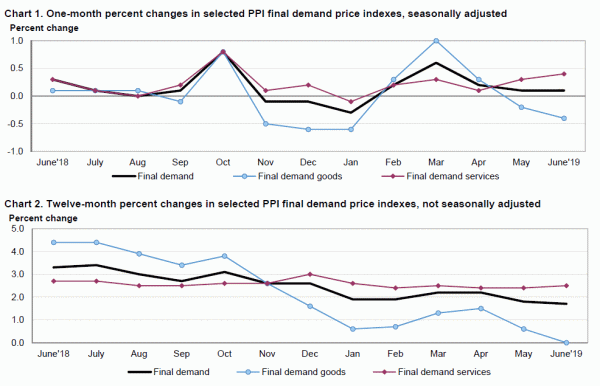
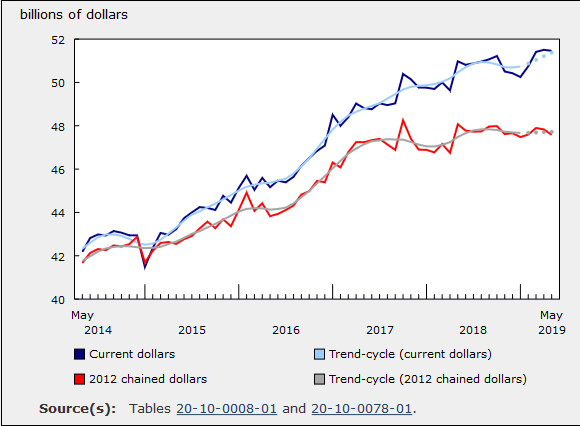
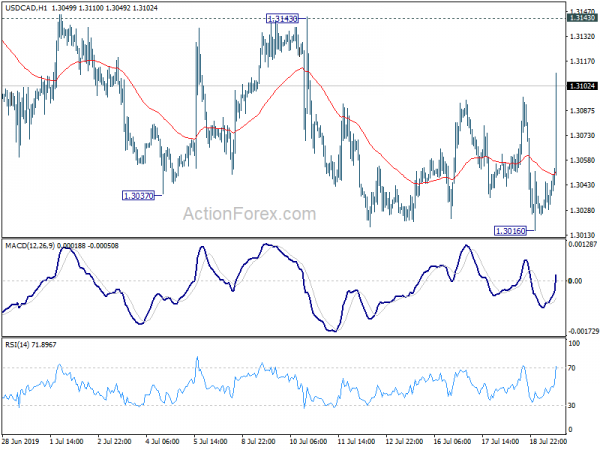

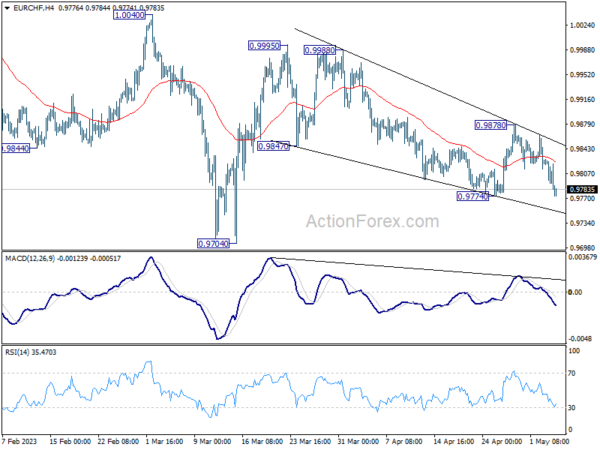
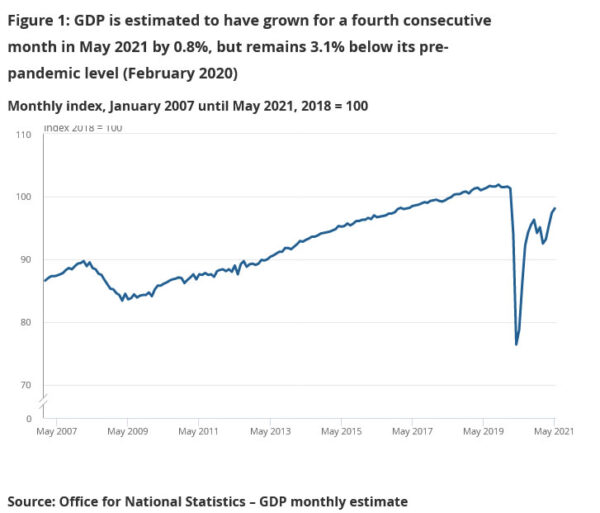
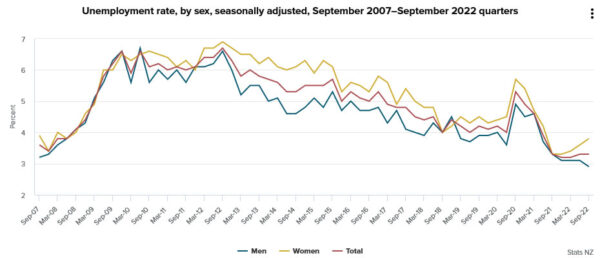
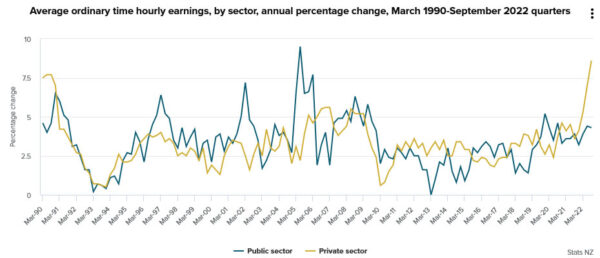
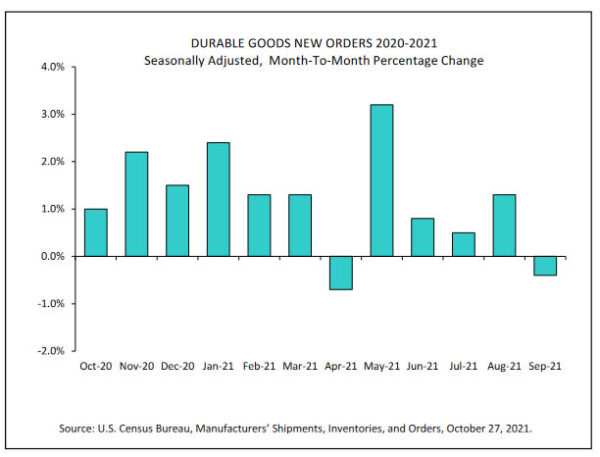
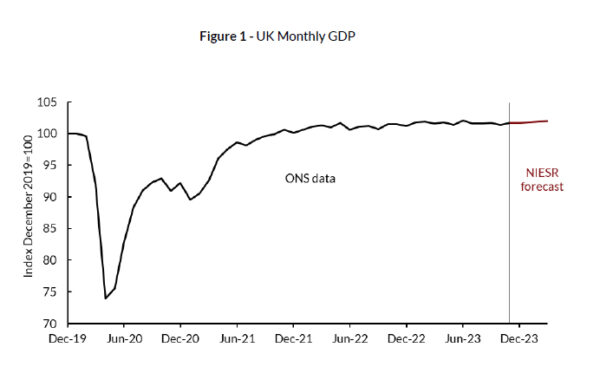

Into European session: Dollar rebound lost steam, Aussie higher after RBA
Entering into European session, Australian Dollar is the strongest one for today so far, followed by New Zealand Dollar. RBA kept interest rate unchanged and downgraded growth and inflation projections. But after all, the central bank remained confident that inflation will gradually pick up. Thus, the next move will still more likely be a hike than a cut. That’s the factor that keeps Aussie buoyed.
Euro is currently trading as the weakest one for today, followed by Swiss Franc and the Dollar. The greenback attempted for a rebound yesterday. But apparently, the rebound was rather weak. Dollar remains near term bearish against Euro, Sterling, Aussie and Canadian. And Dollar is only performing marginally better against Swiss Franc and Yen.
In Asia:
Overnight: